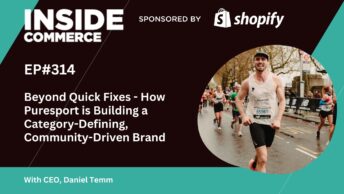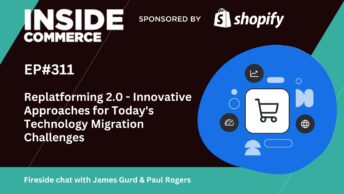An interview with Andreas Knoor, Chief Product Officer at Crownpeak, exploring their ecommerce CMS platform and discussing the differences between headless and non-headless CMS.
Listen on your favourite player
Watch the video
Tl;dr
- The key differences between headless and non-headless CMS solutions
- Why some ecommerce business are moving to headless solutions
- Crownpeak’s integration capability with leading ecommerce platforms
- Key feature walk through: content personalisation, internationalisation and accessibility
In our digital-first world, businesses are continuously adapting to satisfy ever changing customer expectations. Customers want seamless digital experiences across devices but equally the type of content people want to view can vary between mobile and non-mobile.
Choosing the right CMS isn’t always easy, as there are many vendors in the market and different technology models. If you’re considering a new CMS solution, it’s likely you’ll be wondering if headless is the right approach for you, as there is a lot of talk about the benefits of headless CMS. Going headless should never be a business goal, but a headless CMS may well solve your content challenges and provide the right tooling for your content management needs.
In this episode we take a deep dive into the Crownpeak CMS platform with Andreas Knoor, Chief Product Officer. Andreas explains the key technical and operational differences between headless and non-headless, as well as providing insights on how Crownpeak is helping other content teams.
Discussion notes
Part one: exploring different CMS models
- Why should ecommerce and content teams understand the difference between CMS models, why is this important before looking at vendors?
- What CMS models does Crownpeak offer & how do they differ in terms of how ecom teams use them & the level of technical skill required to manage them?
- We’re seeing more demand for headless CMS – why are businesses moving to headless CMS?
- What are the potential limitations to using a pure headless CMS from a marketing and content teams’s POV?
- How can businesses decide which model is right for them – what questions should they be asking?
Part two – Crownpeak features and platform capabilities
- How well integrated are you with leading ecommerce platform and which ecosystems are you most connected with?
- The brands we work with typically have challenges with page builders when it comes to scheduling and permission based publishing, can you talk us through how content teams can manage publishing workflows with Crownpeak?
- How does the platform scale when a customer adds a new storefront, what’s the setup effort in the CMS for a new local country storefront e.g. UK business adds a German locale?
- How independent are different store views in the CMS i.e. can businesses set global assets to save having to publish multiple times, and can they localise individual assets via a single login?
- Can you talk us through how the content personalisation and testing works?
- Let’s talk about content accessibility, as that’s a key part of your product suite – what are the risks of creating inaccessible content?
- How can customers build accessibility thinking into their testing & release strategy & what are the benefits?
- And finally, what’s the roadmap focus, what can existing and new customers expect in the next 6-12 months?
Want to suggest a topic or guest for a future episode? Contact us via the website or on LinkedIn.






